Planning a family adventure? This traveling with kids safety guide and checklist provide essential tips for a smooth and secure journey.
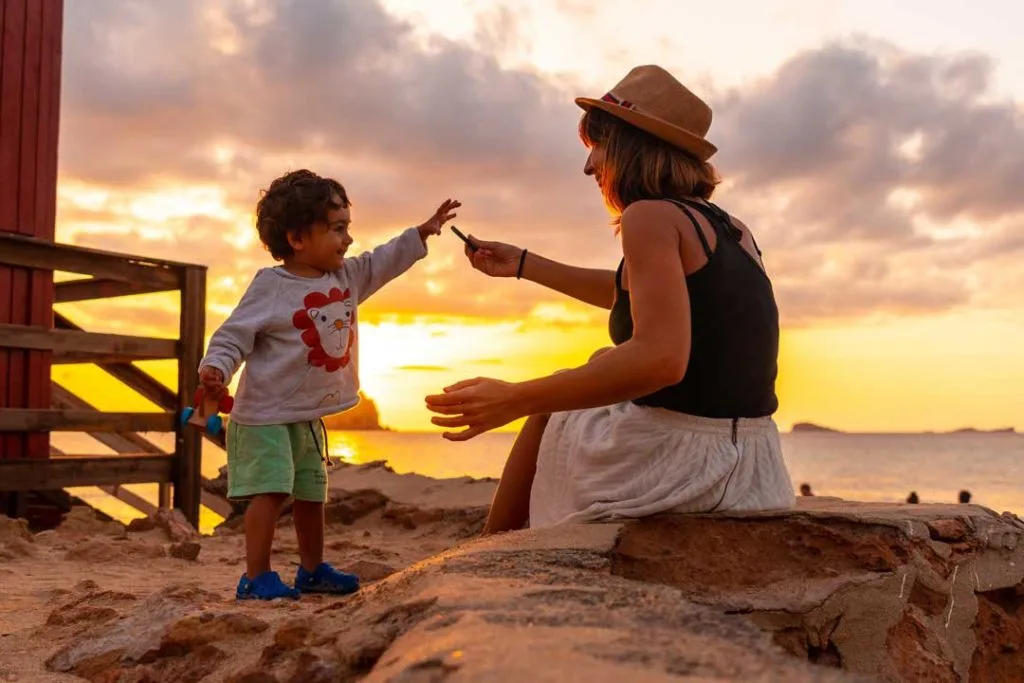
Traveling with children can be an incredibly rewarding experience. It opens their eyes to new cultures, fosters a sense of adventure, and creates lasting family memories. However, it also comes with unique safety challenges.
Kid-Safe Travel: Your Essential Safety Guide
Planning ahead and prioritizing safety is crucial to ensuring a smooth and enjoyable trip for everyone. This comprehensive guide provides must-know safety tips and a handy checklist to help you navigate the world with your little ones, no matter your destination.
Pre-Trip Preparation: Setting the Foundation for a Safe Journey
Laying a solid foundation for safety begins well before your departure. Thoughtful pre-trip preparation can significantly mitigate potential risks and ensure a smoother journey for everyone.
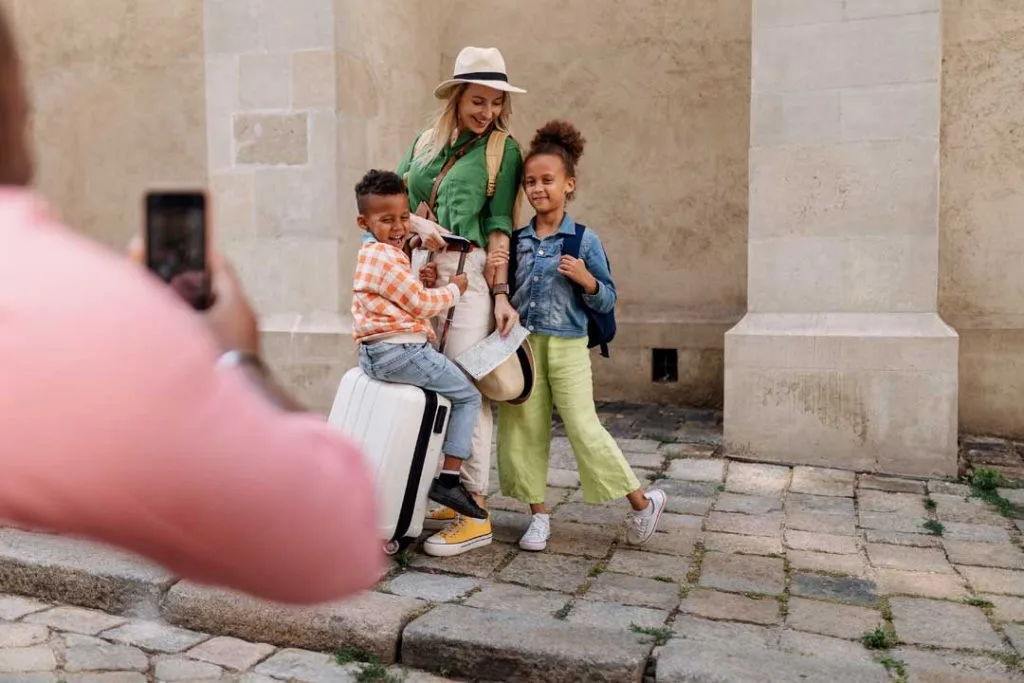
- Destination Research: Thoroughly research your destination. Understand the local laws, customs, potential health risks, and crime rates. Check government travel advisories for up-to-date information on any safety concerns or political instability.
- Health Precautions: Schedule a visit to your pediatrician well in advance of your trip. Discuss necessary vaccinations, malaria prevention (if applicable), and any specific health risks associated with your destination. Pack a comprehensive first-aid kit with all necessary medications (including prescriptions) and over-the-counter remedies.
- Travel Insurance: Invest in comprehensive travel insurance that covers medical emergencies, trip cancellations, lost luggage, and other unforeseen events. Ensure your policy covers your entire family and any specific activities you plan to participate in, like adventure sports. Read the fine print to understand the coverage limitations and exclusions.
- Copies of Important Documents: Make copies of passports, visas, birth certificates, insurance cards, and any other vital documents. Store them separately from the originals, either digitally (encrypted and stored on a secure cloud service) or in a physical location like a hotel safe. Leave a copy with a trusted friend or family member back home.
- Emergency Contacts: Create a list of emergency contact numbers, including local police, ambulance, fire department, your embassy or consulate, and your insurance provider. Keep this list easily accessible in both digital and physical formats. Teach older children how to contact emergency services in case of separation.
- Discuss Safety Rules with Children: Have an open and honest conversation with your children about safety rules before the trip. Teach them about stranger danger, what to do if they get lost, and how to identify safe adults (e.g., police officers, hotel staff). Role-play different scenarios to help them understand how to react in potentially dangerous situations.
- Digital Safety: Discuss online safety with older children. Remind them not to share personal information with strangers online and to be cautious about the websites they visit. Ensure their devices have appropriate parental controls enabled. Consider installing a tracker for kids on their devices or equipping them with a wearable tracking device, especially if they will have some level of independence during the trip.
By taking these proactive steps before you leave, you’ll establish a strong safety framework for your family adventure. This thoughtful preparation provides peace of mind and equips you to handle potential challenges more effectively.
During the Trip: Maintaining Vigilance and Implementing Safety Measures
Once your journey begins, maintaining a state of awareness and actively implementing safety measures is crucial for a smooth and secure experience. Consistent vigilance will help you navigate new environments with your children safely.
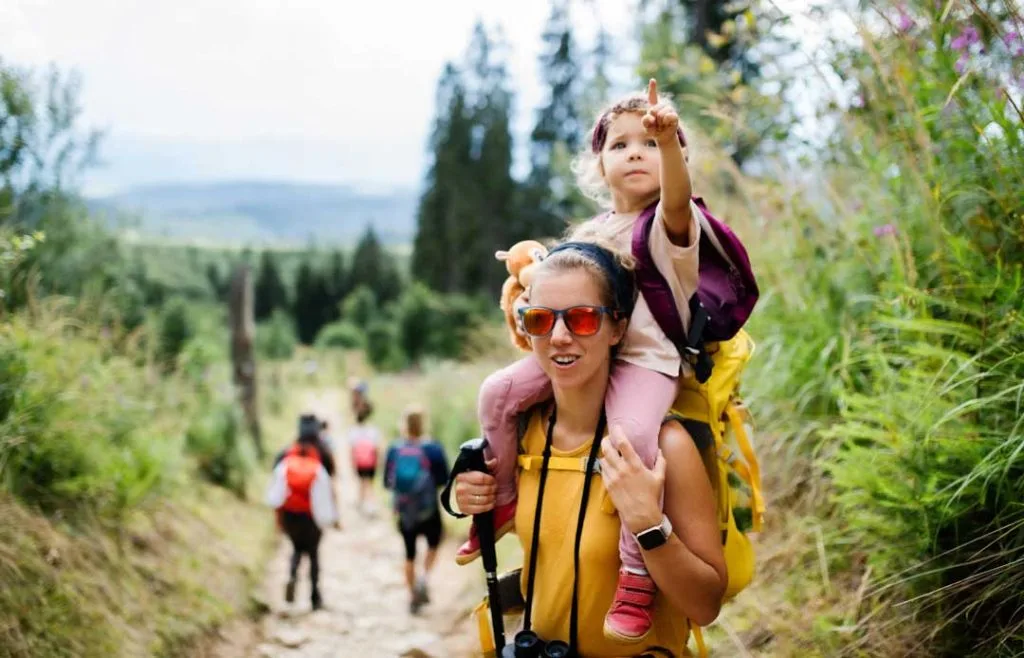
- Transportation Safety:
- Car Seats/Boosters: Use appropriate car seats or booster seats for children who meet the age, weight, and height requirements. Research car seat laws in your destination and ensure you have compatible seats or rent them from a reputable company. Practice installing the car seat properly before you leave home.
- Public Transportation: Be extra cautious when using public transportation. Keep a close eye on your children, especially in crowded areas. Hold their hands tightly and be aware of your surroundings.
- Walking Safety: When walking, hold your children’s hands and be aware of traffic conditions. Teach them to look both ways before crossing the street, even in pedestrian zones. Avoid walking alone at night in unfamiliar areas.
- Air Travel: Bring a small backpack with comfort items to ease their anxiety during flights. Be prepared for changes in air pressure and pack snacks and drinks to help with ear discomfort. Encourage them to get up and move around the cabin periodically to prevent blood clots.
- Accommodation Safety:
- Childproof Your Room: Upon arrival at your hotel or rental property, conduct a quick safety check. Cover electrical outlets, secure loose wires, and remove any potential hazards from reach. Consider bringing a travel-sized door alarm for added security.
- Window and Balcony Safety: Ensure that windows and balconies are securely locked and that children cannot climb onto furniture to access them. Never leave children unattended on balconies.
- Fire Safety: Locate fire exits and emergency procedures. Familiarize yourself with the hotel’s fire alarm system and practice a fire escape plan with your children.
- Water Safety: If your accommodation has a pool, always supervise children closely. Never leave them unattended near the water, even if they know how to swim. Consider bringing a personal floatation device (PFD) for younger children.
- Crowd Management:
- Designated Meeting Points: When visiting crowded attractions, establish a designated meeting point in case of separation. Choose a landmark that is easily recognizable and visible.
- “Buddy System”: Pair older children with a buddy and instruct them to stay together at all times.
- Identifying Information: Write your contact information on a piece of paper and place it in your child’s pocket or attach it to their clothing. Include your hotel name and room number, as well as your phone number. For younger children who may not be able to read, consider using a temporary tattoo or a wristband with your contact information.
- Photos: Take a photo of your children each morning before heading out. This will help you provide an accurate description of their clothing and appearance if they become lost. Also consider a tracker for kids as an alternative or additional way to quickly locate them should they become separated from you.
- Food and Water Safety:
- Safe Water Sources: Drink only bottled or purified water. Avoid ice cubes unless you are certain they are made from safe water.
- Food Hygiene: Be cautious about street food and ensure that food is cooked thoroughly and served hot. Avoid eating raw or undercooked meat, seafood, or eggs. Wash fruits and vegetables thoroughly before consumption.
- Allergies: Clearly communicate any food allergies to restaurant staff and carefully review menus to avoid allergens. Carry an epinephrine auto-injector (EpiPen) if your child has a severe allergy.
- Sun Safety:
- Sunscreen: Apply broad-spectrum sunscreen with an SPF of 30 or higher liberally and frequently, especially after swimming or sweating.
- Protective Clothing: Dress children in lightweight, long-sleeved clothing and wide-brimmed hats to protect them from the sun.
- Sunglasses: Encourage children to wear sunglasses to protect their eyes from harmful UV rays.
- Limit Sun Exposure: Limit sun exposure during peak hours (10 am to 4 pm) and seek shade whenever possible.
- Water Safety (Beyond Accommodation):
- Supervision: Never leave children unattended near any body of water, including beaches, lakes, and rivers. Even shallow water can be dangerous.
- Lifeguards: Swim only in areas where lifeguards are present.
- Rip Currents: Be aware of the dangers of rip currents at beaches. Teach children how to identify a rip current and what to do if they get caught in one.
- Water Shoes: Wear water shoes to protect feet from sharp objects and slippery surfaces.
- Animal Safety:
- Avoid Stray Animals: Avoid contact with stray animals, as they may carry diseases.
- Observe Wildlife from a Distance: Observe wildlife from a safe distance and do not attempt to feed or touch them.
- Insect Repellent: Use insect repellent to protect against mosquito bites and other insect-borne diseases.
By remaining vigilant and consistently applying these safety measures throughout your trip, you can significantly reduce potential risks and ensure a more secure environment for your children. These proactive steps allow you to focus on enjoying the journey and creating positive memories.
Lost Child Protocol: Acting Swiftly and Effectively
Despite your best efforts, children can sometimes become separated from their parents. Having a plan in place can help you react quickly and effectively. Using a tracker for kids, when available, can greatly assist in rapidly locating a missing child.
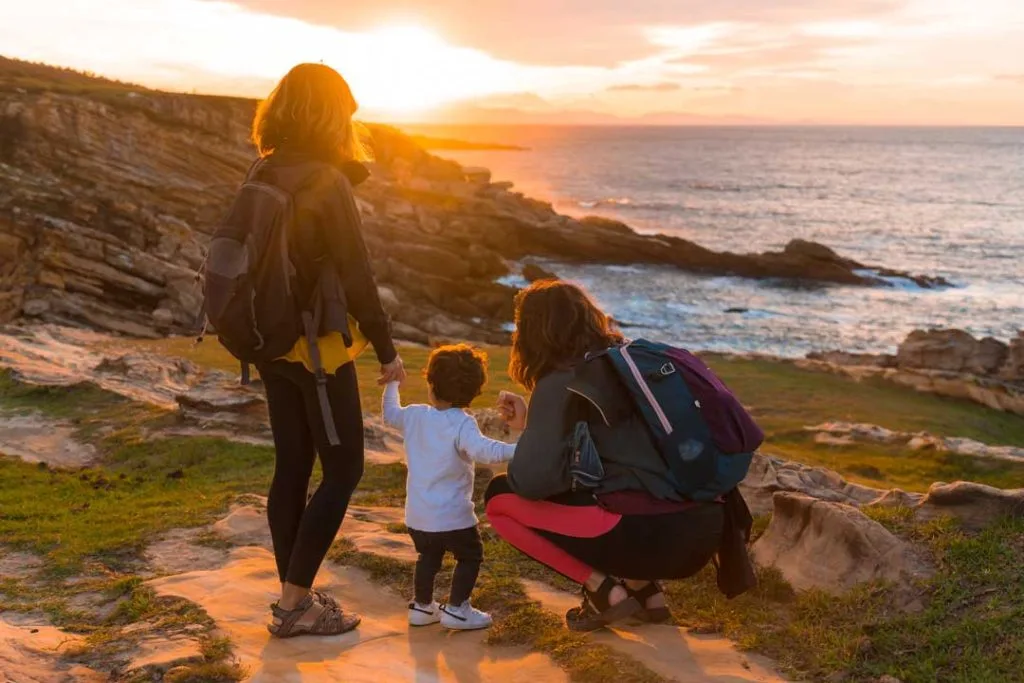
- Stay Calm: The most important thing is to stay calm and avoid panicking.
- Immediately Search the Area: Conduct a thorough search of the immediate area where you last saw your child.
- Alert Staff or Authorities: Notify hotel staff, security personnel, or local police immediately. Provide them with a recent photo of your child and a detailed description of their appearance and clothing.
- Use a Whistle or Loud Voice: Use a whistle or call out your child’s name loudly to attract their attention.
- Contact Emergency Services: If you are unable to locate your child after a reasonable amount of time, contact emergency services and provide them with all relevant information.
- Designated Meeting Point: Head to the predetermined meeting point to see if your child has made their way there.
- Teach Children to Seek Help: Teach your children to approach a safe adult, such as a police officer, security guard, or store employee, if they get lost. They should also know to stay put and not wander around looking for you.
Post-Trip Review: Learning and Improving for Future Adventures
After your trip, take some time to reflect on what went well and what could have been improved.
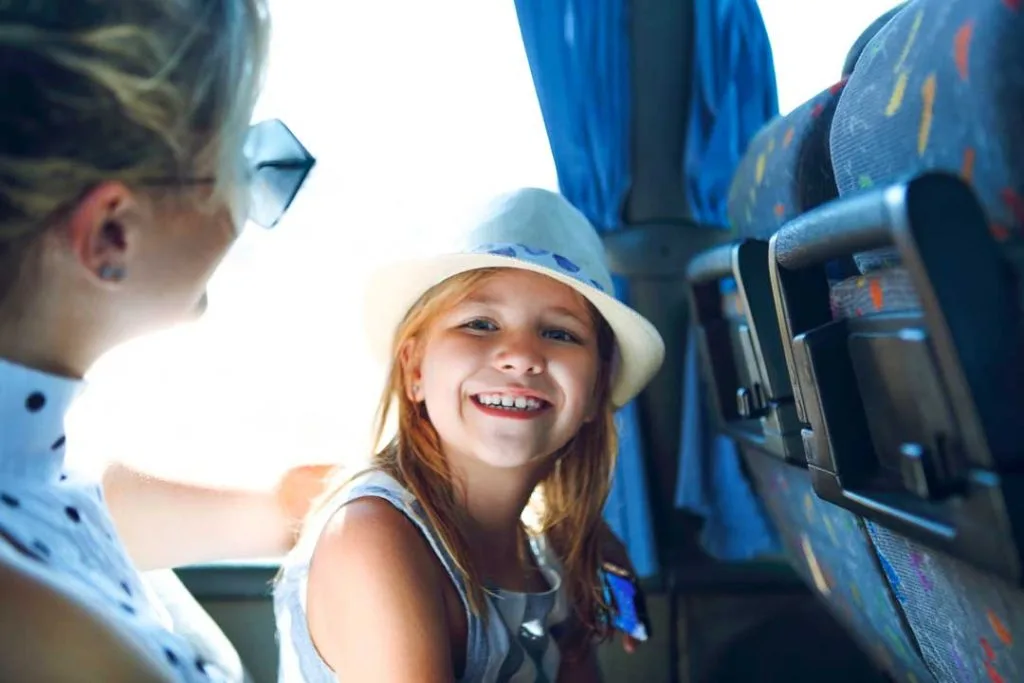
- Discuss the Trip with Your Children: Talk to your children about their experiences and ask them about any safety concerns they had.
- Review Your Safety Plan: Evaluate the effectiveness of your safety plan and identify any areas that need improvement.
- Update Your Checklist: Add or remove items from your checklist based on your experiences.
- Document Lessons Learned: Document any lessons learned to help you prepare for future trips.
Traveling with Kids: Safety Checklist
This checklist is a general guide and should be adapted to your specific destination and the ages of your children.
Before You Go:
- Research destination safety and health risks.
- Schedule pediatrician visit for vaccinations and advice.
- Purchase travel insurance for the entire family.
- Make copies of important documents (passports, visas, etc.).
- Create a list of emergency contact numbers.
- Discuss safety rules with children (stranger danger, lost child protocol).
- Pack a comprehensive first-aid kit.
- Obtain necessary prescriptions and medications.
- Childproof your digital devices and install parental controls.
- Consider using a tracker for kids.
During the Trip:
- Use appropriate car seats/booster seats.
- Supervise children closely on public transportation.
- Hold children’s hands when walking in crowded areas.
- Childproof hotel room/rental property.
- Ensure window and balcony safety.
- Establish a designated meeting point in crowded areas.
- Implement a “buddy system” for older children.
- Write contact information on children’s clothing or use temporary tattoos.
- Take a photo of children each morning.
- Drink only bottled or purified water.
- Practice food hygiene and be aware of allergies.
- Apply sunscreen and wear protective clothing.
- Supervise children closely near water.
- Avoid contact with stray animals.
- Use insect repellent.
Lost Child Protocol:
- Stay calm.
- Immediately search the area.
- Alert staff or authorities.
- Use a whistle or loud voice.
- Contact emergency services.
- Head to the designated meeting point.
- Utilize the tracker for kids, if available.
Traveling Safely with Children: A Comprehensive Guide
Traveling with kids requires careful planning and constant vigilance. By following these safety tips and using the provided checklist, you can create a safer and more enjoyable travel experience for your entire family. Remember to adapt these guidelines to your specific needs and destination. Happy travels!

Jessi is the creative mind behind The Coffee Mom, a popular blog that combines parenting advice, travel tips, and a love for all things Disney. As a trusted Disney influencer and passionate storyteller, Jessi’s authentic insights and relatable content resonate with readers worldwide.
